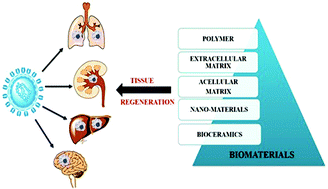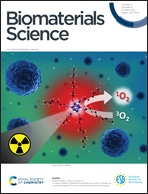SARS-CoV-2 and tissue damage: current insights and biomaterial-based therapeutic strategies
Abstract
The effect of SARS-CoV-2 infection on humanity has gained worldwide attention and importance due to the rapid transmission, lack of treatment options and high mortality rate of the virus. While scientists across the world are searching for vaccines/drugs that can control the spread of the virus and/or reduce the risks associated with infection, patients infected with SARS-CoV-2 have been reported to have tissue/organ damage. With most tissues/organs having limited regenerative potential, interventions that prevent further damage or facilitate healing would be helpful. In the past few decades, biomaterials have gained prominence in the field of tissue engineering, in view of their major role in the regenerative process. Here we describe the effect of SARS-CoV-2 on multiple tissues/organs, and provide evidence for the positive role of biomaterials in aiding tissue repair. These findings are further extrapolated to explore their prospects as a therapeutic platform to address the tissue/organ damage that is frequently observed during this viral outbreak. This study suggests that the biomaterial-based approach could be an effective strategy for regenerating tissues/organs damaged by SARS-CoV-2.

- This article is part of the themed collection: Coronavirus articles - free to access collection


 Please wait while we load your content...
Please wait while we load your content...